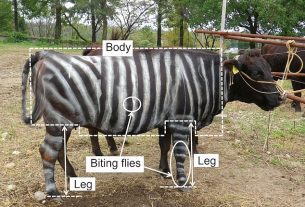The atmospheric future of the world is being written in the melting of glaciers in Greenland, says David Holland, an environmental scientist at the University of New York.
It is here, in the icy plains of Greenland, where glaciers are melting and collapsing thundering over the sea.
David Holland, an environmental scientist at the University of New York who is monitoring the melting of glaciers in Greenland, calls it “the end of our planet.” It refers more to the geographical location of the place than its future, but in many ways, it is here that the atmospheric future of our world is being written.
It’s so hot here, inside the Arctic Circle, that on one day in August people took off their coat and Holland and his colleagues examined the watery ice without needing gloves. In a nearby town called Kulusuk, the temperature in the morning was 10.7 degrees Celsius (52 Fahrenheit).
The ice sheet on which Holland is is thousands of years old. In one or two years it will melt into the sea, raising the level of the waters more worldwide.
This year the summer has been particularly portentous for Greenland, with an unprecedented heat that has melted vast areas of the icy surface. By the end of the summer some 440,000 million tons (400,000 million metric tons) of Greenland ice – perhaps more – will have evaporated or collapsed in the sea, scientists estimate. To get an idea: that amount of water would be used to flood all of Pennsylvania or all of Greece in 35 centimeters (one foot) below the surface.
In just five days, from July 31 to August 3, more than 58,000 million tons (53,000 million metric tons) melted an increase of 40,000 million tons over the average for this time of year. And those 58,000 million do not even include the collapse of glaciers in the sea or the melting of ice below the surface.
One of the most affected places is in southeastern Greenland: Helheim, one of the glaciers that has lost the most surface. The iceberg has shrunk about 10 kilometers (6 miles) since a group of scientists visited it in 2005.
What is happening, experts say, such as NASA oceanographer Josh Willis, is a combination of climate change produced by human activity and natural but unusual meteorological phenomena. It is true that glaciers here shrink in the summer and widen in winter, but never as has happened this year.
Summit Station, a scientist camp at a peak 3,200 meters (almost 2 miles) high in northern Greenland, was above freezing temperature twice this year, for a total of 16 hours. Before that, the station was above that temperature only three times: once in 2012 that lasted six and a half hours, once in 1889 and once in the Middle Ages.
This year’s temperatures are approaching those of 2012, the worst year in terms of ice melting in Greenland, scientists say.
“If you look at the weather projections, what we predict is a melting of wider areas of the ice sheet, for longer periods and with a greater loss of mass,” said Tom Mote, weather expert at the University of Georgia. “There are reasons to believe that years like this will be more common.”
A NASA satellite found that the ice sheet in Greenland lost about 255,000 million metric tons of ice per year between 2003 and 2016 and that the trend was gradually getting worse. Almost all 28 Greenland glaciers measured by Danish scientist Ruth Mottram are losing ground, especially Helheim.
Helheim is covered with a vast icy surface between mountains that now have no ice but in winter they are covered. The only thing that offers an indication of the size of the place is the helicopter that takes Holland and his team, which appears as a tiny point, almost imperceptible against the background of vast plains and icy mountains.
Such mountains measure between 70 and 100 meters (between 225 and 338 feet). Next to it are the remains of Helheim – ice, snow, icebergs over the sea – forming an image of rugged terrain with various shapes and textures. In some places puddles have formed, an almost phosphorescent blue color.
When the pilot Martin Norregaard looks for a place to land, he contemplates for the surface to detect some ground, which would show that the surface is firm enough to land the ship. If all you see is ice, landing there could lead to a deadly fall in icy waters.
Holland and his team get off the helicopter to install radars and GPS devices to track the movement of ice and investigate the reasons why salty and warm water is coming to the surface.
“The formation of an ice sheet takes a long time, thousands and thousands of years, but breaking it takes a short time,” says Holland.
Holland, like NASA’s Willis, suspects that the water that comes in part of the Gulf of Mexico in North America is a formerly unsuspected role in the Greenland melt. And if so, it is bad news for the planet because it implies a greater and faster melting, and consequently, a higher level of water.
Willis estimates that by 2100, Greenland on its own will have poured more than one meter at sea level on the planet.




